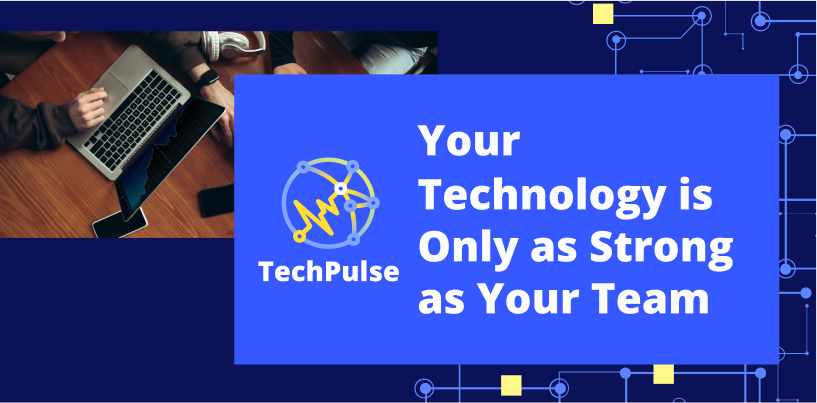Leading Through Digital Transformation
A People-First Approach
According to McKinsey's latest Digital Transformation survey, 70% of digital transformations fail to achieve their objectives, with employee resistance and inadequate leadership support cited as primary factors. While organizations rush to implement cutting-edge technologies, they often overlook their most valuable asset: their people. Successful digital transformation isn't just about selecting the right technology stack—it's about creating an environment where people can embrace change, innovate, and thrive.
The Human Element of Digital Transformation
Digital transformation inherently disrupts established workflows, challenges existing skill sets, and creates uncertainty. While C-suite executives often focus on technological capabilities and ROI, the Boston Consulting Group research reveals that organizations emphasizing people-centric transformation approaches are 1.5 times more likely to achieve sustainable success.
Consider the case of a Latin American financial services provider that initially struggled with its cloud migration initiative. The technical implementation was sound, but adoption rates remained low, and productivity decreased in the first quarter. The turning point came when leadership shifted their focus from technical milestones to employee experience, implementing what we'll explore as the three pillars of people-first transformation.
Three Pillars of People-First Digital Transformation
1. Creating Psychological Safety in Times of Change
Digital transformation often triggers fear—fear of obsolescence, fear of failure, and fear of the unknown. Leaders must create an environment where teams feel safe to experiment, fail, and learn. This means:
Establishing clear communication channels for feedback and concerns
Celebrating learning moments, including unsuccessful attempts
Creating structured time for experimentation and skill development
Acknowledging and addressing fears openly and honestly
According to recent Gartner research, organizations that establish psychological safety see a 76% increase in employee engagement during transformation initiatives.
2. Empowering Through Continuous Learning
The half-life of technical skills continues to shrink, making continuous learning beneficial and essential. Forward-thinking leaders are reimagining professional development through:
Personalized learning pathways aligned with transformation goals
Peer-to-peer learning programs that leverage internal expertise
Cross-functional projects that blend technical and business skills
Investment in both technical and soft skills development
Research from IDC Latin America shows that companies investing over 20% of their transformation budget in training and development are twice as likely to report successful outcomes.
3. Building Inclusive Transformation Teams
Diverse perspectives lead to more innovative solutions and better outcomes. Leaders should focus on:
Creating cross-functional teams that blend technical expertise with business acumen
Ensuring representation from different departments, backgrounds, and experience levels
Establishing "transformation champions" across all levels of the organization
Developing metrics that measure both technical adoption and human factors
Implementation Framework: The CARE Model
To put these principles into practice, leaders can follow the CARE model:
Connect: Build genuine relationships and understand individual concerns
Schedule regular one-on-ones focused on personal impact
Create forums for open dialogue about transformation challenges
Establish mentor-mentee relationships across different expertise levels
Align: Ensure everyone understands their role in the transformation
Communicate how individual roles evolve with new technologies
Link personal development plans to transformation objectives
Create visible career paths in the transformed organization
Resource: Provide the tools and support needed for success
Invest in comprehensive training programs
Ensure access to necessary technical resources
Allocate time for learning and adaptation
Empower: Give teams agency in shaping the transformation
Delegate decision-making authority where appropriate
Create opportunities for innovation and experimentation
Recognize and reward initiative and creativity
Looking Ahead: The Evolution of Leadership in Digital Transformation
Successful digital transformation leadership will increasingly require a blend of technical vision and human understanding as we progress. Leaders must:
Develop emotional intelligence alongside technical knowledge
Create systems that support both technological and human growth
Build cultures that embrace continuous change and learning
Measure success through both technical and human metrics
Conclusion: The Path Forward
Digital transformation success ultimately depends on your people's ability and willingness to embrace change. Leaders can create environments where people and technology thrive by prioritizing the human element. Start by assessing your current transformation approach through a people-first lens, identify gaps in your support systems, and commit to building a culture where technological change and human growth go hand in hand.
Remember: The most sophisticated technology implementation will fail without people ready and willing to embrace it. Lead empathetically, invest in your people, and watch your digital transformation flourish.
Angel Ramirez is the CEO of Cuemby and a CNCF & OSPO Ambassador. He specializes in cloud-native technologies and digital transformation and helps organizations in Latin America and globally optimize their cloud strategies for sustainable growth.




